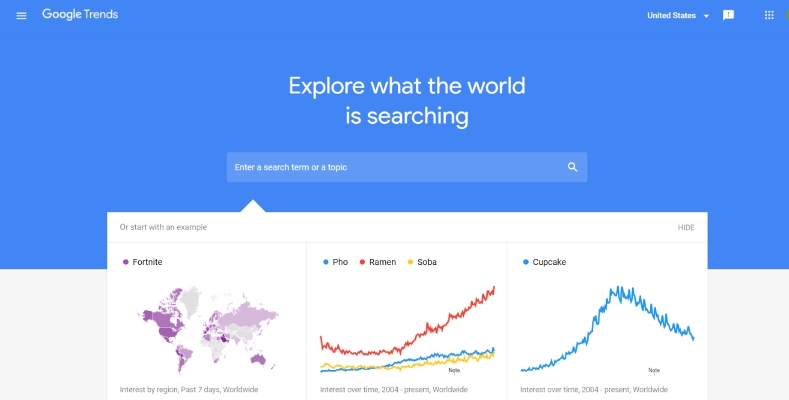
It's difficult to discern if searches for the topic are moving up or down unless you've been collecting that data month after month. Many keyword research tools provide an estimate of the monthly search volume. Sign up to receive weekly, daily, or as-needed updates on the top, most, or all search trends. The same is true for the tables "Related subjects" and "Related queries." Begin with a broad topic and then focus on particular search phrases as you examine the results.ĭo you employ newsjacking to produce content? Then you should absolutely subscribe to Google Trends. Topics are broad groups, whereas search phrases are narrowly focused on keywords. Whatever it is that does It is a Topic if it does not have a "search keyword" below it. You may also modify the date to extend or limit the history, but bear in mind that if you choose a period within seven days, the sample will change. Pro Tip: As you type your query, take note of the auto-populated alternatives. You can, for example, filter down to a metropolitan region in the Country drop-down picker below your query or click on the alternatives on the map. Need to gauge interest in your product or service before launching it in a new market? Google Trends Explore can assist you in understanding how seasonality and geography may impact your product or service. Instead of going through each component and graphic, consider how they may be applied to everyday marketing activities. The Realtime Search Trends report contains, in addition to search query data, the number of Google News items generated every hour.

One significant limitation of the statistics is that Google retains inquiries that may be the result of "irregular behavior." Google claims that this is done to maintain the quality of search data offered by other Google technologies. Simply put, if Google removed spammy behavior from Trends, spammers could use the tool to learn which phrases are flagged as spam and change them appropriately. These statistics are then scaled on a scale of 0 to 100, based on the fraction of searches on all topics for that topic. Google Trends provides anonymized real-time and non-real-time samples of Google search queries, which are then sorted into themes.īecause we may identify patterns by geography, the data is adjusted so that locations with the highest search traffic do not always rank first. To analyze relative popularity, Google divides each data point by the total number of searches in the location and time range it covers. It gives real-time statistics on current patterns from the last seven days, as well as historical trends dating back to 2004. Google Trends visualizes Google's trending topics, search phrases, and news. On the Google Trends site, the phrase "Explore what the world is Googling" welcomes you and appropriately describes what the tool performs. Use Google Trends to analyze news publications. Use Google Trends to Conduct Keyword Research Use Google Trends to Conduct Market Research Search engine marketers can use Google Insights to fine tune their keyword strategies because it allows them to examine search cycles and patterns for specific keywords and a keyword's popularity by location and time range.Where Does Google Trends Data Originate from In 2008, Google announced Google Insights for Search, a service that offers more advanced features for displaying search trends data. "Also visited" and "also searched for" columns show other websites and other search terms that a site's visitors are likely to visit and search for. The data includes unique visitors and a regions column, which shows the percentage of visitors from a specific geographical region. Another feature called Google Trends for Websites analyzes website traffic, rather than traffic for specific search terms. csv file, which can be opened in Excel and other spreadsheet applications.Ī feature called "Hot Searches" displays a list of the day's top 40 search queries in the United States. Data in the graph can be exported into a. Results are displayed in a graph that Google calls a "Search Volume Index" graph.

It's possible to query up to five words or topics simultaneously in Google Trends. Although the data provided by Google Trends is updated daily, Google includes a disclaimer that the data Trends produces "may contain inaccuracies for a number of reasons, including data sampling issues and a variety of approximations that are used to compute results." Google Trends works by analyzing a portion of Google searches to compute how many searches have been done for the terms entered, relative to the total number of searches done on Google over the same time. Google Trends is an online search tool that allows the user to see how often specific keywords, subjects and phrases have been queried over a specific period of time.


 0 kommentar(er)
0 kommentar(er)
